
KIH
[Purist]
12044

Masahiro Kikuno's Basel piece and new offering

AHCI member, Masahiro Kikuno's Basel model and his new offering.
I had a wonderful evening with a young (just turned 30) AHCI member (no longer a "candidate") looking at and discussing what he presented at the last Basel as well as his new offering.
His policy and philosophy is clear and straightforward.
"I stick to as much 'hand-made' as possible. That is how the watchmakers in the old time were doing and achieved a lot and that is how mechanical watches have evolved. The innovations which aimed for the "efficient" way of making watches with the latest machines and materials have already been realized and achieved by the quartz watches. When I think of the reasons why the mechanical watches did come back to the main stream watch market as more and more people want them, it is very natural for me as a watchmaker to also come back to as much 'hand-made' as possible, like the way it has been since the invention of the watch."
Interesting thought process and I am impressed with such a high ideal from a very young watchmaker. Sure, I admit that I tend to expect accuracy from mechanical watches first, but I understand his way of thinking as well. He, of course, realizes how important the accuracy is for the watch lovers as well. There may be a lot of disagreeing opinion and he would be happy to listen to such criticism as well.
Now on to his watches....
1. Orizuru (Paper Crane)
( en.wikipedia.org )
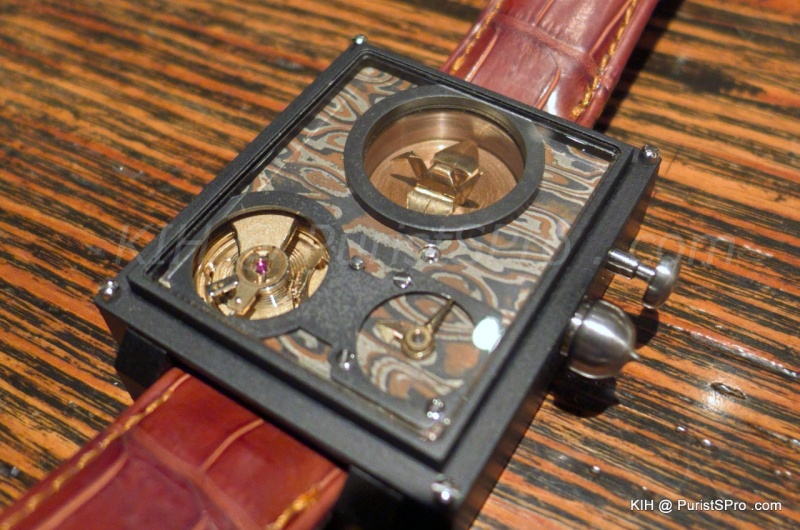
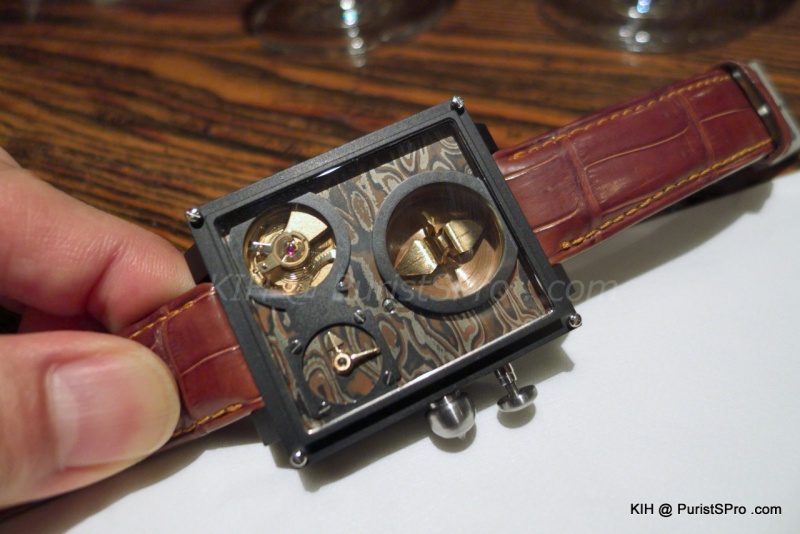
Anodized Aluminum case.
And this "round window in the square wall" is inspired by the traditional Japanese room.....


The upper pusher is for Automata and chiming (only for the hour)

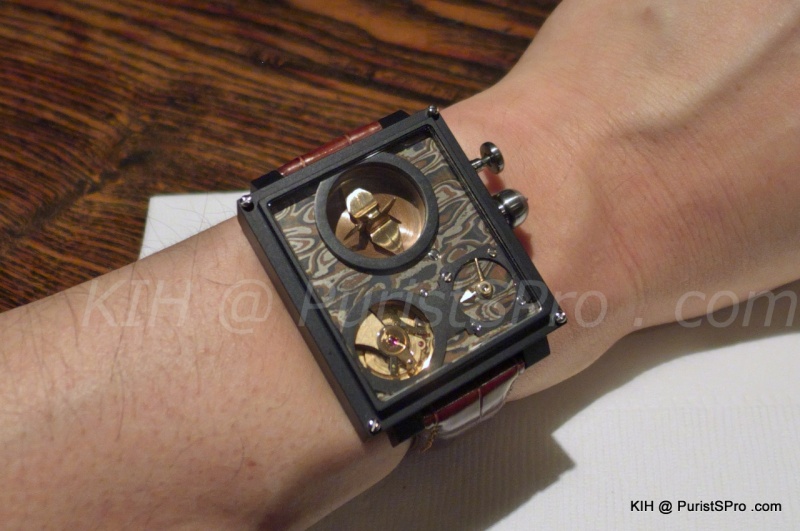
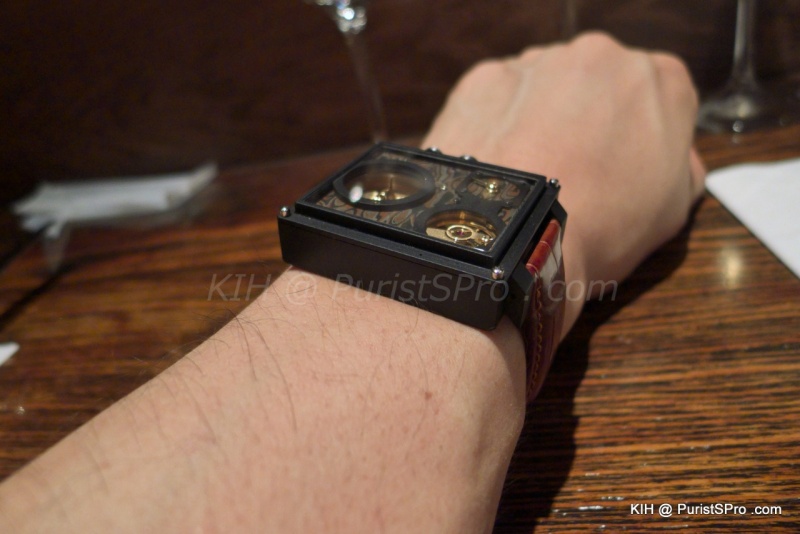
This "Orizuru (paper crane)" are of course made by hand.
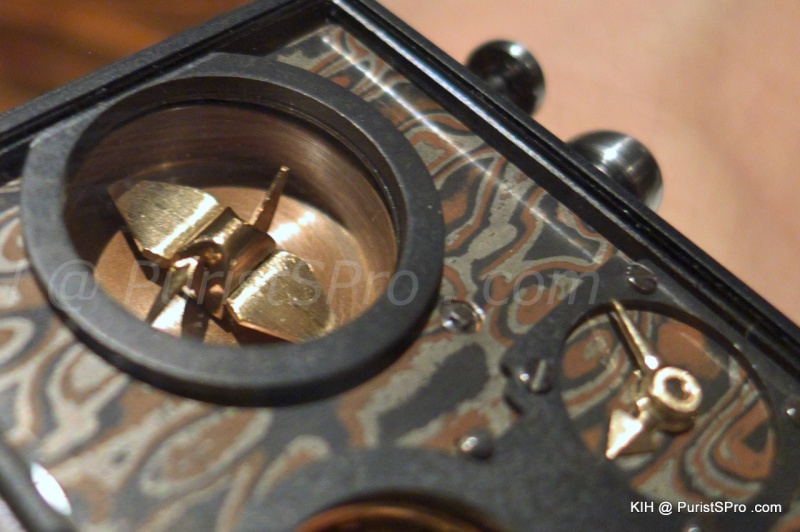
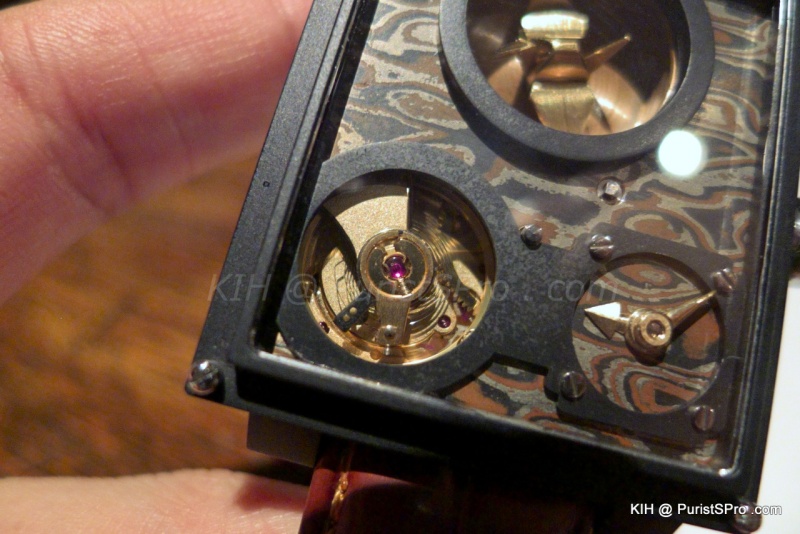
How he made this "pattern" on the dial:
The technique is traditional Japanese "Mokume-Gane ( en.wikipedia.org )". Takes many hours to create such pattern (piling up 24 thin metal sheet which consists of copper, red copper, and Shibuichi alloy (75% copper and 25% silver) - eight for each, and press it hard, then make a hole with drill and then again press is thinner and thinner.....). There can be no identical pattern.
The uniqueness of this traditional "Mokume-Gane" methos is to use totally different types of alloy or metals, not only the steels and press the pile of such variety of metal sheets..


Now here and see how the Crane behaves when the pusher is pressed (sorry for the ambient noise).
He admits that the sound is too low and the crane does not go back to where it is supposed to be. The gong is the cage of the crane and the hammer bangs it from outside. It is also designed so that the crane look down in AM and look up in PM - that function works well. But still he admits that there was the design flaw and he knows what was wrong.
Having said that, he says this is not for sale and he will put in the shelf for a while as he now focuses on other things. One is to make smaller version of "Wa-Dokei" by which he was nominated for the "candidate" for AHCI membership, and he is also working on the next watch, which is more practical and appealing to the broader audience. See next.
2. Unnamed (Kikuno #2)
This is the prototype of his next offering. Still prototype, so please understand that it will still take time to complete.
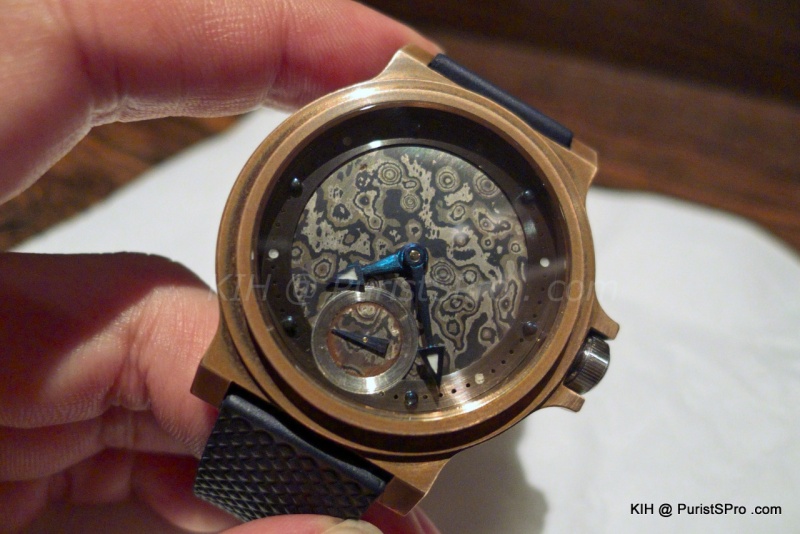
He will offer this with only in the bronze case - changes color as it is used and time passes. Interesting idea.

The same dial pattern "Mokume-Gane".

Hands, index can be customized to certain extent. This prototype, made for himself, is equipped with lumi on the hands and every other index dots as he wanted lumi hands watch. Blue hands are of course true blued hands made manually.

43mm.
He is now working on improving the accuracy by modifying the hair spring. Putting a small weight on the 5th or 6th loop of the hair spring - this is the theory found and implemented by SEIKO (patented) long time ago. Hair spring is, no matter how well it is coiled, Breguet or Flat, NOT perfectly center-balance and SEIKO engineers long time ago found that by putting a small "counterweight", it can be made center-balance, and thus vastly improve the position difference. The theory says, "at 220 degrees rotation, the effect of the 'unbalance' of the hair spring is eliminated and that is where how the 'counter-weight' should be put on can be determined. It is used in 4S79 Chronometer and several other GS level movements. Less knowledgeable street watchmakers often mistakes such small counterweight as "dust" on the hair spring and takes and throws away - A BIG MISTAKE!
4S79 Chronometer's hair spring - photo courtesy of Mr. Ohira of SII.





Interesting offering and I will follow up as it makes progress.
Thank you, Mr. Kikuno, for sharing this new model with PPro first.
Please also read the article on NY Times about him here:
www.nytimes.com
Best,
Ken
This message has been edited by KIH on 2013-09-22 19:55:24
More posts:

Masahiro Kikuno's Basel piece and new offering
AHCI member, Masahiro Kikuno's Basel model and his new offering. I had a wonderful evening with a young (just turned 30) AHCI member (no longer a "candidate") looking at and discussing what he presented at the last Basel as well as his new offering. His p...